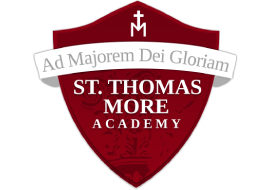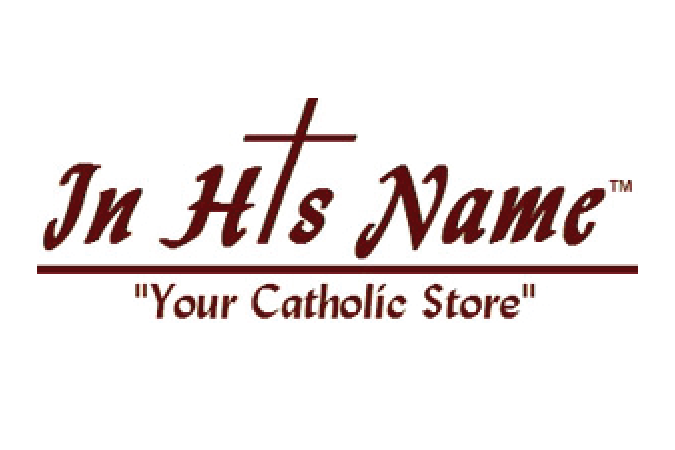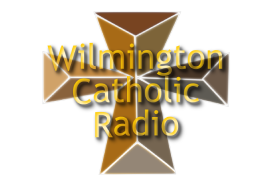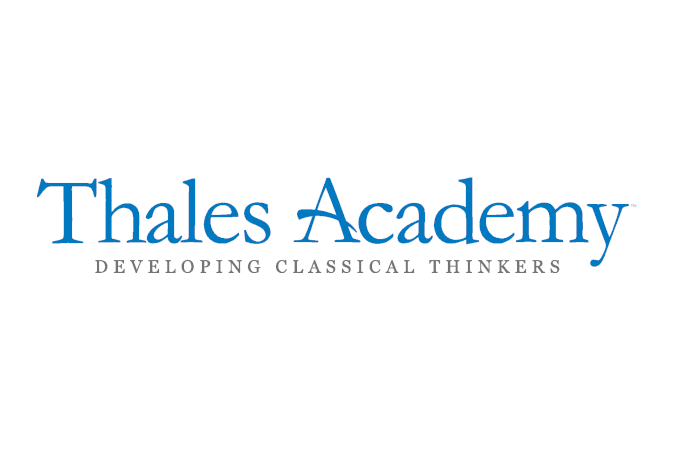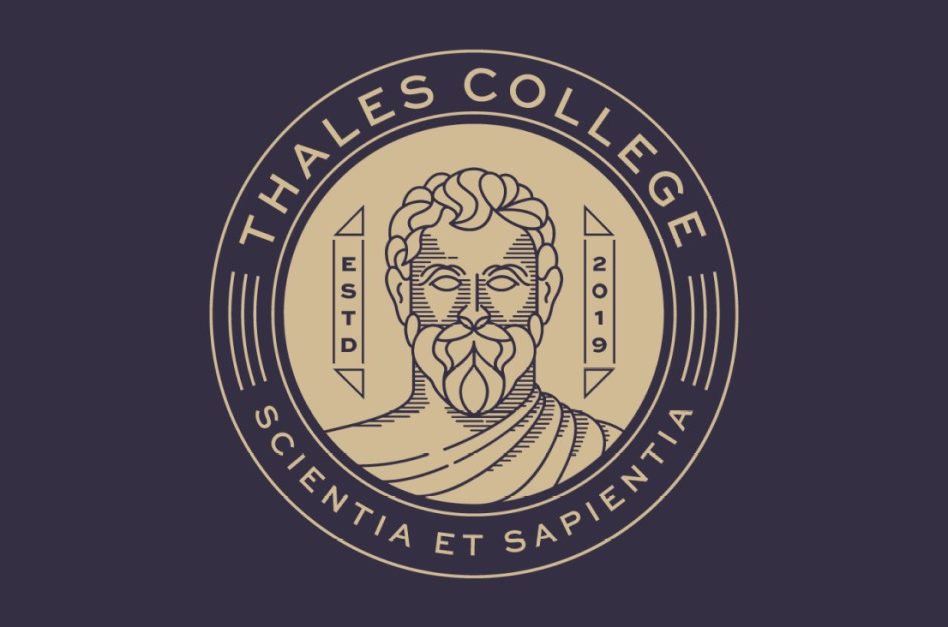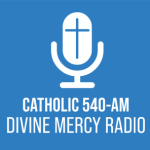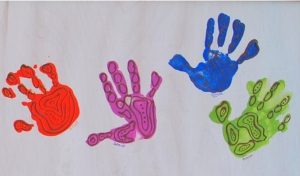TICKETS
If you haven’t already done so, you can buy your tickets HERE.
We strongly recommend you create an account when you purchase your tickets so you can download your tickets from your My Account page if you lose your tickets and/or your ticket email.
After your purchase, you can download your tickets from the website. Additionally, you’ll receive your tickets via email. If you lose your ticket email, go to your My Account -> Purchased Events page to download your tickets from within your ticket invoice on that page.
If for any reason you need to modify your tickets, you can do so from your My Account -> Purchased Events page. Simply click on the invoice for the tickets you wish to modify, scroll down to the ticket line items, and click Modify Ticket. Remember to click SAVE after you’ve modified your ticket(s).
After you’re finished modifying your tickets, you can download your updated tickets from the same invoice page by clicking the Download Tickets link.
If you’ve already purchased tickets and created an account during your purchase, you can download your tickets from the website at any time.
Simply go to your My Account -> Purchased Events page and click on the invoice for the tickets you wish to download. Scroll down to the ticket linen item(s) and click the Download Tickets link.
HOTEL & CONFERENCE INFORMATION
Ignited By Truth has negotiated a group rate for hotel reservations as follows:
Hotel:
Courtyard Raleigh Cary Crossroads
5730 Dillard Dr, Cary, NC 27518
View Map
Room Rate: $159/night
Deadline: April 7th, 2023
Use the booking link below to receive the discounted rate. Rooms are limited and availability is not guaranteed.
BOOK NOW
The 2-Day Conference will be held:
Friday, April 28th – 6:30 – 9:30 PM
Saturday, April 29th – 8:00 AM – 5:30 PM
NC State Reynolds Coliseum
2411 Dunn Ave
Raleigh, NC 27607
Due to road construction, MORRILL Drive & CATES Ave (on the South side of Reynolds) are CLOSED. Do not attempt to drive through campus. Instead, please come from Hillsborough Street (North) or Western Blvd (South) via PULLEN Drive.
Parking Deck
Free parking is available in Reynolds Coliseum Parking Deck, located at 201 Jensen Drive, Raleigh, NC 27601.
Directions to the Parking Deck: From Western Blvd., turn onto Pullen Road, go through the stoplight and turn onto Dunn Ave. The parking decking will be on your left between Jensen Drive and Jeter Drive.
The parking lot between Reynolds Coliseum and the Parking Deck as well as almost all parking on surrounding streets is free on Saturday. There is a drop-off area at the front entrance to the Coliseum on Dunn Avenue.
Main Stage Venue
The Main Stage Program and Vendor & Ministry Fair will be held in William Neal Reynolds Coliseum, located at 2411 Dunn Ave, Raleigh, NC 27606.
Directions to Reynolds Coliseum
Take 1-40 east to exit 295 (Gorman St.). Exit right and turn left at stop light. Go to Avent Ferry Rd. and turn right. The third traffic light is at the intersection of Western Blvd. Go straight through that light (street will become Morrill Dr.) into NC State campus. Continue down Morrill Dr. until you get to a three-way stoplight. Turn right onto Cates Ave. Reynolds Coliseum is on the left.
Friday evening, food will be provided during the Steubenville Night of Worship.
For Saturday, when you purchase your ticket, you have the option to select Turkey Sub Lunch, Pizza Lunch, or No Lunch (meaning “provide your own”). If you select the “No Lunch” option, you can either bring your own lunch with you, or purchase food and drink from the various vendors in Talley Student Union, which is a building located adjacent to Reynolds Coliseum at 2610 Cates Ave, Raleigh, NC 27606.
To pickup your Lunch Pre-Order at the conference: You can show your order confirmation email by printing it or presenting it on your phone. or Show your bracelet which will identify the lunch option purchased with your ticket if any. |
***Lunch Seating: Inside Talley and the outside Courtyard. A map is below and will be in your program with directions to the Atrium and Hillsborough street. Some people have asked about breakfast after mass. Talley is a good alternative for that.
SCHEDULE & SPEAKERS
Steubenville Night of Worship
*** Agenda is subject to change. ***
6:15 PM – Venue Opens/Registration/House Music
6:45 PM – Gathering Music (Dana Catherine)
7:05 PM – Welcome & Introductions (Deacon Ralph Poyo)
Blessing of the Weekend (Fr. Ian Van Heusen)
7:25 PM – Worship & Teaching (Dana Catherine)
7:40 PM – Refuge with Keynote Kris Frank
8:10 PM – Song Response & Transition to Adoration (Deacon Ralph Poyo)
8:20 PM – Eucharistic Adoration with Procession & Benediction
(Fr. Ian Van Heusen and Dana Catherine)
9:30 PM – Wrap up
The Sacrament of Reconciliation will be available throughout the evening.
Main Conference
*** Agenda is subject to change. ***
7:30 AM – Registration / Vendor & Ministry Fair
8:00 AM – Rosary with Deacon Ralph Poyo
8:20 AM – The Veil Removed (video)
8:30 AM – Mass with Bishop Zarama
Break (when Mass ends)
9:45 AM – Welcome with Deacon Ralph Poyo
10:00 AM – Living Divine Mercy with Fr. Chris Alar
Break (when talk ends)
11:10 AM – Further Up, Further In: A Clarion Call for Catholics with Matthew Leonard
Lunch Break
12:50 PM – Hope. Always. with Kris Frank
Break (when talk ends)
2:00 PM – Replacing the Sexual State with a Civilization of Love (+ Q&A) with Dr. Jennifer Roback Morse
3:00 PM – Eucharistic Procession
Praise & Worship
Divine Mercy Chaplet
Break (when worhip ends)
4:10 PM – True Love with Jackie Angel
5:00 PM – Closing with Deacon Ralph Poyo
Confessions, Eucharistic Adoration, and Veneration of Relics will be available throughout the day.
RELICS ON DISPLAY
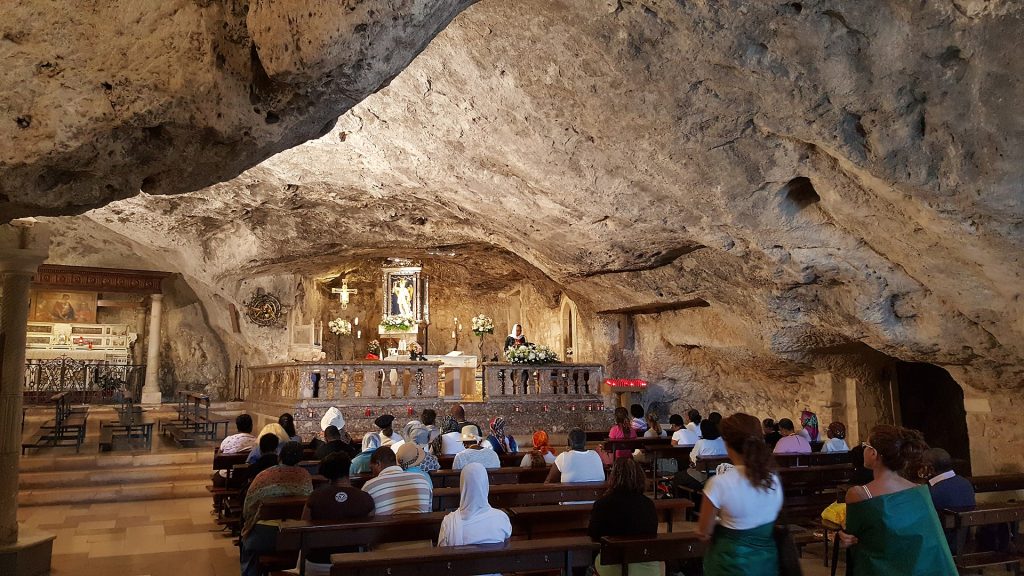
There is a large limestone cave in Gargano, Italy, that was a site of pagan worship in Greek and Roman times. Likely around 490, a wealthy noble named Elvio Emanuele was searching for a bull that had wandered from his herd on the slopes of the mountain. He found it stuck in the entrance to a cave. Angry at the bull for being unmanageable, he tried to have it shot with an arrow by a servant, but somehow the arrow came back and struck the archer himself The noble went to Bishop Maiorano of Sipontum — who was later canonized and is now known as St. Lorenzo Maiorano — and recounted the strange events. The bishop, sensing something supernatural was afoot, ordered three days of prayer and penance.
At the end of the third day, St. Michael appeared to the bishop, saying:
Know ye that this man is so hurt by my will. I am Michael the archangel, which will that this place be worshipped in earth, and will have it surely kept. And therefore I have proved that I am keeper of this place by the demonstrance and showing of this thing.
After this apparition, the people and the bishop made a procession to pray at entrance of the cave. Two years later, likely in 492, the region was attacked by Odoacer and the Christian forces were all but defeated. Bishop Maiorano negotiated a three-day truce with the barbarians, during which the people prayed and did penance. But then St. Michael appeared to the bishop and promised help if they would attack the enemy. During the ensuing battle, a storm of sand and hail broke out that terrified the barbarians, who fled.
Once more the bishop led a procession to the cave to thank St. Michael, but he did not enter, still unwilling to claim the cave for Michael since the place had been considered sacred by local pagans. Bishop Maiorano asked Pope Gelasius I for advice, and the Holy Father told him to occupy the cave and to consecrate it a church.When they arrived to consecrate the cave, Michael appeared to the bishop again. This time, he explained that it was not necessary to consecrate the cave as it had already been consecrated by Michael’s presence. The bishop entered and found an altar covered with a red cloth with a crystal cross on top. He had a church built at the front of the cave and dedicated it to St. Michael on September 29, 493.
And so, at the archangel’s direction, the cave was turned into a church, and it became known throughout the world in a short time. The region took the name of St. Michael, and the sanctuary became one of the four major pilgrimage sites in all of Europe for centuries. St. Francis of Assisi did not feel worthy to enter but prayed for thirty days and nights outside the cave. Later, St. Padre Pio would send people needing deliverance from evil spirits to the cave, and they were healed. The cave has been visited by pilgrims, kings, queens, popes, and saints ever since.
St. Michael Against the Plague
The cave and the sanctuary built out of it returned to prominence in the seventeenth century, when, in 1656, a plague was ravaging Naples and the surrounding countryside. The bishop, Alfonso Puccinelli, pleaded to St. Michael the Archangel for help. At dawn on September 22, after three days of fervent prayer and fasting, St. Michael appeared and promised that those who reverently kept small stones from the cave in their homes and prayed earnestly would be saved from the epidemic. And indeed the words were fulfilled. In memory of this miracle, the bishop erected a statue of St. Michael in front of his palace and added the inscription: “Prince of angels, conqueror of the plague.”
Stones from St. Michael’s cave are still distributed today, both as general sacramentals and as relics, especially to help against the demonic. Many exorcists around the world have used stones from the cave in their rites, with effects similar to those of relics of other saints.
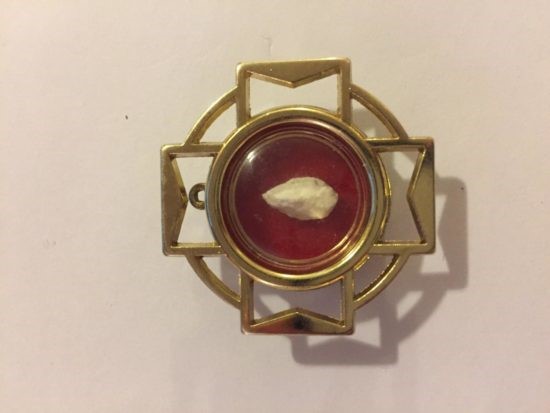
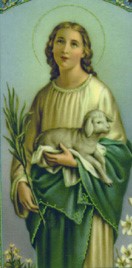
St. Agnes of Rome was born in 291 AD and raised in a Christian family. Agnes was very beautiful and belonged to a wealthy family. Her hand in marriage was highly sought after, and she had many high ranking men chasing after her. However, Agnes made a promise to God never to stain her purity. Her love for the Lord was great and she hated sin even more than death! Whenever a man wished to marry Agnes, she would always say, “Jesus Christ is my only Spouse.”
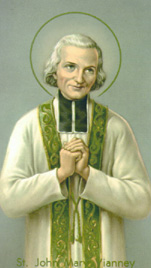 Jean-Baptiste-Marie Vianney, known as John in English, was born May 8, 1786 in Dardilly, France and was baptized the same day. He was the fourth of six children born to Matthieu and Marie Vianney. John was raised in a Catholic home and the family often helped the poor and housed St. Benedict Joseph Labre when he made his pilgrimage to Rome.
Jean-Baptiste-Marie Vianney, known as John in English, was born May 8, 1786 in Dardilly, France and was baptized the same day. He was the fourth of six children born to Matthieu and Marie Vianney. John was raised in a Catholic home and the family often helped the poor and housed St. Benedict Joseph Labre when he made his pilgrimage to Rome.
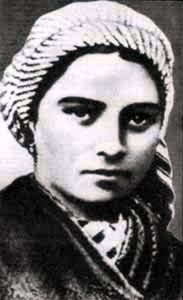 St. Bernadette was born in Lourdes, France on January 7, 1844. Her parents were very poor and she was the first of nine children. She was baptized at St. Pierre’s, the local parish church, on January 9. As a toddler, Bernadette contracted cholera and suffered extreme asthma. Unfortunately, she lived the rest of her life in poor health.
St. Bernadette was born in Lourdes, France on January 7, 1844. Her parents were very poor and she was the first of nine children. She was baptized at St. Pierre’s, the local parish church, on January 9. As a toddler, Bernadette contracted cholera and suffered extreme asthma. Unfortunately, she lived the rest of her life in poor health.

Elizabeth Ann Bayley Seton was the first native born American to be canonized by the Catholic Church. Born two years before the American Revolution, Elizabeth grew up in the upper class of New York society. She was a prolific reader, and read everything from the Bible to contemporary novels. In spite of her high society background, Elizabeth’s early life was quiet, simple, and often lonely. As she grew a little older, the Bible was to become her continual instruction, support and comfort -and she would continue to love the Scriptures for the rest of her life.

St. Catherine of Siena was born during the outbreak of the plague in Siena, Italy on March 25, 1347. She was the 25th child born to her mother, although half of her brothers and sisters did not survive childhood. Catherine herself was a twin, but her sister did not survive infancy. Her mother was 40 when she was born. Her father was a cloth dyer. At the age of 16, Catherine’s sister, Bonaventura, died, leaving her husband as a widower. Catherine’s parents proposed that he marry Catherine as a replacement, but Catherine opposed this. She began fasting and cut her hair short to mar her appearance.
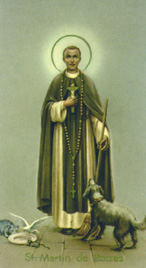
St. Martin de Porres was born in Lima, Peru on December 9, 1579. Martin was the illegitimate son to a Spanish gentlemen and a freed slave from Panama, of African or possibly Native American descent. At a young age, Martin’s father abandoned him, his mother and his younger sister, leaving Martin to grow up in deep poverty. After spending just two years in primary school, Martin was placed with a barber/surgeon where he would learn to cut hair and the medical arts.
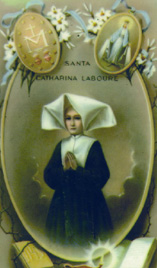
St. Catherine Labouré was born in France on May 2, 1806 as the ninth of 11 children to Pierre and Madeleine Labouré. In 1815, Catherine’s mother passed away, leaving her 9-year-old daughter with the responsibility of caring for the household. After her mother’s funeral, Catherine returned home and picked up a statue of the Blessed Virgin. Holding it close, she said, “Now you will be my mother.”
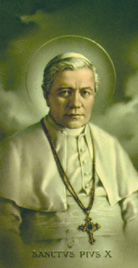 On June 2, 1835, Giuseppe Melchiorre Sarto saw the light of earth at Riesi, Province of Treviso, in Venice; on August 20, 1914, he saw the light of heaven; and on May 29, 1954, he who had become the two hundred fifty-ninth pope was canonized St. Pius X.
On June 2, 1835, Giuseppe Melchiorre Sarto saw the light of earth at Riesi, Province of Treviso, in Venice; on August 20, 1914, he saw the light of heaven; and on May 29, 1954, he who had become the two hundred fifty-ninth pope was canonized St. Pius X.Learn More…
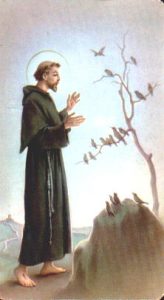
Founder of the Franciscan Order, born at Assisi in Umbria, in 1181. In 1182, Pietro Bernardone returned from a trip to France to find out his wife had given birth to a son. Far from being excited or apologetic because he’d been gone, Pietro was furious because she’d had his new son baptized Giovanni after John the Baptist. The last thing Pietro wanted in his son was a man of God — he wanted a man of business, a cloth merchant like he was, and he especially wanted a son who would reflect his infatuation with France. So he renamed his son Francesco — which is the equivalent of calling him Frenchman.
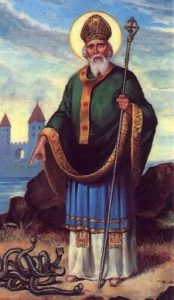
St. Patrick of Ireland is one of the world’s most popular saints. He was born in Roman Britain and when he was fourteen or so, he was captured by Irish pirates during a raiding party and taken to Ireland as a slave to herd and tend sheep. At the time, Ireland was a land of Druids and pagans but Patrick turned to God and wrote his memoir, The Confession. In The Confession, he wrote: “The love of God and his fear grew in me more and more, as did the faith, and my soul was rosed, so that, in a single day, I have said as many as a hundred prayers and in the night, nearly the same. I prayed in the woods and on the mountain, even before dawn. I felt no hurt from the snow or ice or rain.”
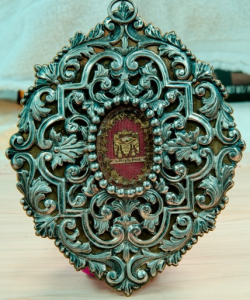 The Holy Protomartyr and Archdeacon Stephen was the eldest of the seven deacons, appointed by the Apostles themselves, and therefore he is called “archdeacon.” He was the first Christian martyr, and he suffered for Christ when he was about thirty. In the words of Asterias, he was “the starting point of the martyrs, the instructor of suffering for Christ, the foundation of righteous confession, since Stephen was the first to shed his blood for the Gospel.”
The Holy Protomartyr and Archdeacon Stephen was the eldest of the seven deacons, appointed by the Apostles themselves, and therefore he is called “archdeacon.” He was the first Christian martyr, and he suffered for Christ when he was about thirty. In the words of Asterias, he was “the starting point of the martyrs, the instructor of suffering for Christ, the foundation of righteous confession, since Stephen was the first to shed his blood for the Gospel.”
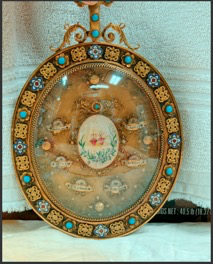 Saint Maximi – (St Maximin), an early bishop of Aix-en-Provence in southern France. Nothing is really known of his history, not even the years in which he lived, but he became an important figure in the later medieval legend of St Mary Magdalene and her siblings. According to the story, first attested only in the second millennium, when the early Church was “scattered” after the martyrdom of St Stephen (Acts 8), the persecutors set Mary, Martha, Lazarus and many others in a rudderless boat, thinking it would sink and drown them. They were instead brought by divine intervention to the port city of Marseille, of which Lazarus became the first bishop; among their companions were Maximin and Sidonius, the former said by local tradition to have also been the boy whose loaves and fishes were multiplied by Christ (John 6), and the latter said to be the blind man healed in John 9. After years of living a contemplative life in the cave known as the Sainte-Baume (still a popular pilgrimage place to this day), the dying Magdalene received the Viaticum from St Maximin, who then took care of her burial. – Could also be Saint Maxiinus. Learn More…
Saint Maximi – (St Maximin), an early bishop of Aix-en-Provence in southern France. Nothing is really known of his history, not even the years in which he lived, but he became an important figure in the later medieval legend of St Mary Magdalene and her siblings. According to the story, first attested only in the second millennium, when the early Church was “scattered” after the martyrdom of St Stephen (Acts 8), the persecutors set Mary, Martha, Lazarus and many others in a rudderless boat, thinking it would sink and drown them. They were instead brought by divine intervention to the port city of Marseille, of which Lazarus became the first bishop; among their companions were Maximin and Sidonius, the former said by local tradition to have also been the boy whose loaves and fishes were multiplied by Christ (John 6), and the latter said to be the blind man healed in John 9. After years of living a contemplative life in the cave known as the Sainte-Baume (still a popular pilgrimage place to this day), the dying Magdalene received the Viaticum from St Maximin, who then took care of her burial. – Could also be Saint Maxiinus. Learn More…
St. Agnes – St. Agnes of Rome was born in 291 AD and raised in a Christian family. Agnes was very beautiful and belonged to a wealthy family. Her hand in marriage was highly sought after, and she had many high ranking men chasing after her. However, Agnes made a promise to God never to stain her purity. Her love for the Lord was great and she hated sin even more than death! – Whenever a man wished to marry Agnes, she would always say, “Jesus Christ is my only Spouse.” Learn More…
St. Charles – (Borromeo) The name of Charles Borromeo is associated with reform. He lived during the time of the Protestant Reformation, and had a hand in the reform of the whole Church during the final years of the Council of Trent. Although he belonged to the Milanese nobility and was related to the powerful Medici family, Charles desired to devote himself to the Church. In 1559, when his uncle, Cardinal de Medici was elected Pope Pius IV, he made Charles cardinal-deacon and administrator of the Archdiocese of Milan. At the time Charles was still a layman and a young student. Because of his intellectual qualities Charles was entrusted with several important offices connected with the Vatican, and later appointed secretary of state with responsibility for the papal states. The untimely death of his elder brother brought Charles to a definite decision to be ordained a priest, despite his relatives’ insistence that he marry. Soon after being ordained a priest at age 25, Borromeo was consecrated bishop of Milan. Learn More…
St. Louis de Sales – St. Francis de Sales was born to a noble family at Chateau de Sales in the Kingdom of Savoy near Geneva, Switzerland on August 21, 1567. He was a Bishop and Doctor of the Church. Francis was both intelligent and gentle. From a very early age, he desired to serve God. He knew for years he had a vocation to the priesthood, but kept it from his family. His father wanted him to enter a career in law and politics. In 1580, Francis attended the University of Paris, and at 24-years-old, he received his doctorate in law at the University of Padua. Learn More…
St. Jane de Chantal – “In Madame de Chantal I have found the perfect woman, whom Solomon had difficulty finding in Jerusalem”. – St. Francis de Sales, her spiritual director. St. Jane Frances de Chantal was born in Dijon, France, on January 28, 1572, and died at the Visitation Convent Moulins on December 13, 1641. Jane (Jeanne) was born into nobility, her father being the president of the parliament of Burgundy. At age 20 she was married to the Baron de Chantal. Jane had four children, and loved and served her young family deeply until the death of her husband in a hunting accident at age 28. For seven years she was forced to live in the house of her father in law, a trial which she was forced to bare patiently due to his ill-disposition towards her, and it was during this time that she took a vow of perpetual chastity. Learn More…
St. Margaret Mary Alacoque – St. Margaret Mary Alacoque, a French Roman Catholic Visitation nun and mystic, is greatly recognized for her devotion to the Sacred Heart of Jesus. She was born in 1647 in France as the only daughter of Claude and Philiberte Lamyn Alacoque. Margaret has always shown an intense love for the Blessed Sacrament and preferred silence over typical childhood play. She began practicing severe corporal mortification after her first communion at 9-years-old. She continued this until rheumatic fever confined her to her bed for four years. After making a vow to the Blessed Virgin Mary to consecrate herself to religious life, Margaret instantly returned to perfect health. In recognition of this favor, Margaret added the name Mary to her baptismal name. Learn More…
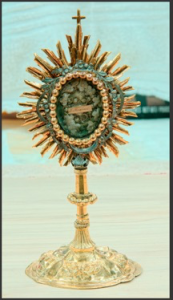 Saint Maximi – Could be St. Maximin-
Saint Maximi – Could be St. Maximin-
St Maximin, an early bishop of Aix-en-Provence in southern France. Nothing is really known of his history, not even the years in which he lived, but he became an important figure in the later medieval legend of St Mary Magdalene and her siblings. According to the story, first attested only in the second millennium, when the early Church was “scattered” after the martyrdom of St Stephen (Acts 8), the persecutors set Mary, Martha, Lazarus and many others in a rudderless boat, thinking it would sink and drown them. They were instead brought by divine intervention to the port city of Marseille, of which Lazarus became the first bishop; among their companions were Maximin and Sidonius, the former said by local tradition to have also been the boy whose loaves and fishes were multiplied by Christ (John 6), and the latter said to be the blind man healed in John 9. After years of living a contemplative life in the cave known as the Sainte-Baume (still a popular pilgrimage place to this day), the dying Magdalene received the Viaticum from St Maximin, who then took care of her burial. Learn More…
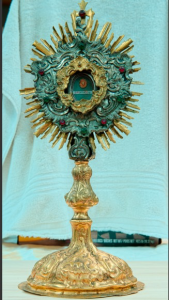 Saint Martha Virg – “Jesus loved Martha and Mary and Lazarus.” This unique statement in John’s gospel tells us of the special relationship Jesus had with Martha, her sister, and her brother. Apparently Jesus was a frequent guest at Martha’s home in Bethany, a small village two miles from Jerusalem. We read of three visits in Luke 10:38-42, John 11:1-53, and John 12:1-9. Many of us find it easy to identify with Martha in the story Luke tells. Martha welcomes Jesus and his disciples into her home and immediately goes to work to serve them. Hospitality is paramount in the Middle East and Martha believed in its importance. Imagine her frustration when her sister Mary ignores the rule of hospitality and Martha’s work in order to sit and listen to Jesus. Instead of speaking to her sister, she asks Jesus to intervene. Jesus’ response is not unkind, which gives us an idea of his affection for her. He observes that Martha is worried about many things that distract her from really being present to him. He reminds her that there is only one thing that is truly important — listening to him. And that is what Mary has done.
Saint Martha Virg – “Jesus loved Martha and Mary and Lazarus.” This unique statement in John’s gospel tells us of the special relationship Jesus had with Martha, her sister, and her brother. Apparently Jesus was a frequent guest at Martha’s home in Bethany, a small village two miles from Jerusalem. We read of three visits in Luke 10:38-42, John 11:1-53, and John 12:1-9. Many of us find it easy to identify with Martha in the story Luke tells. Martha welcomes Jesus and his disciples into her home and immediately goes to work to serve them. Hospitality is paramount in the Middle East and Martha believed in its importance. Imagine her frustration when her sister Mary ignores the rule of hospitality and Martha’s work in order to sit and listen to Jesus. Instead of speaking to her sister, she asks Jesus to intervene. Jesus’ response is not unkind, which gives us an idea of his affection for her. He observes that Martha is worried about many things that distract her from really being present to him. He reminds her that there is only one thing that is truly important — listening to him. And that is what Mary has done.
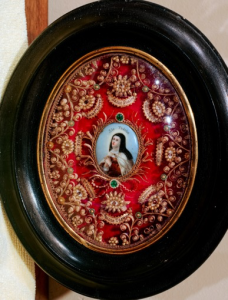 Saint Suaire – Unsure, appears to be associated with Shroud of Turn
Saint Suaire – Unsure, appears to be associated with Shroud of Turn- Saint Joseph – Joseph was the husband of Mary, and the legal father of Jesus Christ, the Savior of the world. While he was not Jesus’ biological father, he played an instrumental role in the birth and upbringing of Jesus. Joseph’s lineage can be traced back all the way to the house of King David. He is mentioned in the early parts of the gospels of Matthew and Luke and lesser in John’s gospel. The Universal Catholic Church later named him the patron of the church. Learn More…
- Saint Anne – Tradition refers to St. Anne as being the mother of the Virgin Mary. Although not written of in the Bible, Anne is given credence in the non-biblical gospel of James. She was born in Bethlehem and married Joachim from Nazareth in Galilee. Joachim was a shepherd given the task of supplying the temple of Jerusalem with sheep for sacrifices. Learn More…
- Saint Clemence – Clement of Rome was the third successor of Saint Peter, reigning as pope during the last decade of the first century. He’s known as one of the Church’s five “Apostolic Fathers,” those who provided a direct link between the Apostles and later generations of Church Fathers. Learn More…
- Saint Veronica – Saint Veronica is known as the woman who offered a cloth to Jesus so He could wipe His face on the way to His crucifixion. The cloth is believed to exist today in the Vatican and is considered one of the most treasured relics of the Church. Saint Veronica is not mentioned in the Bible, but is known to us by Catholic tradition and in the Sixth Station of the Cross, “Veronica Wipes the Face of Jesus.” Learn More…
- Saint Felix – Felix was the son of Hermias, a Syrian who had been a Roman soldier. He was born on his father’s estate at Nola near Naples, Italy. On the death of his father, Felix distributed his inheritance to the poor, was ordained by Bishop St. Maximus of Nola, and became his assistant. When Maximus fled to the desert at the beginning of Decius’ persecution of the Christians in 250, Felix was seized in his stead and imprisoned. He was reputedly released from prison by an angel, who directed him to the ailing Maximus, whom he brought back to Nola. Learn More…
- V. de La Sainte Vierge – Unclear, some reference this as being Mary, the mother of Jesus.
Frequently Asked Questions
Yes, the second level of the coliseum will have seating for social distancing.
Yes, go to the Main Stage before Mass begins to request a Gluten-Free host.
Search for the subject, “Your tickets from Ignited by Truth”. You may either display your tickets on your phone or print and bring them with you.
Remember that if you created an account on our website when you purchased your tickets, you can download your tickets here.
If, for any reason, you’re not able to locate or download your tickets, we can look up your registration at the door.
Yes, we are having a Steubenville Night of Worship event on Friday evening. You can see the agenda for that by clicking here.
Registration is required.
See the section above on Hotel & Conference Information for directions & parking.
In addition to an order confirmation, your ticket will arrive by e-mail. Sometimes the system takes a few minutes to send the e-mail.
Remember that if you created an account on our website when you purchased your tickets, you can download your tickets here.
If, for any reason, you’re not able to locate or download your tickets, we can look up your registration at the door. You will receive a reminder e-mail within one week before the conference.
The word catholic means “universal”. The truths proclaimed at the conference are light for all people.
Ignited By Truth is a wonderful opportunity to come back! You will experience a sense of community sitting side-by-side with the other attendees as all of us together rediscover the gift of our Faith.
Inviting your loved one to come with you is the best way! If you have been to a past IBT conference, you could explain why you liked it. If you are excited about this year’s speakers, share what you know about them. Consider what you could do to make it possible for this person to come. Could you pay admission? Arrange childcare? Give a ride? Do what you can and leave it in God’s hands.
Email envoys@IgnitedByTruth.org and we will advise you and provide all the materials you need!
Ignited By Truth is a series of lectures geared for older students through adults. The talks, although given by dynamic speakers, would not capture the attention of young children. For recording purposes and as a courtesy to others who are trying to listen and understand, we thought it best to set the age minimum at 10 years old. We understand that this is a great sacrifice to young families, and we thank you for your consideration.
There are many possibilities:
- Your spouse could attend part of the conference, and you could attend the rest.
- Pair up with another couple who also needs childcare and split the cost of a babysitter or trade off babysitting during the day.
- Arrange play dates for your children with their friends or cousins.
- Invite one of your parents to visit with their grandchildren for the day.
Should you be unable to attend, please consider offering your admission to a friend or as a tax-deductible gift. If there is a financial hardship, we do have the ability to process a refund.
Ignited By Truth is a 501(c)(3) organization supported by the Catholic Diocese of Raleigh, NC.
Yes, and doing this will allow you more time to browse the vendor and ministry tables.
Yes, Talley Student Union is adjacent to Reynolds Coliseum and has a variety of food vendors.
https://dining.ncsu.edu/location/talley-pavilions/
For fastest service, please download the “Tapingo” phone app which allows pre-ordering.
Clark Dining Hall is also within walking distance at 221 Jensen Drive just beyond the parking deck (https://dining.ncsu.edu/location/clark/).
No! The discount is available individually with advance registration. There is no need to create a group. Please register online while tickets are still available.
Reynolds Coliseum has convenient parking and partial handicap (ADA) accessibility. Assistance for elderly and handicapped is provided by volunteers. There will be many chairs on the floor of the coliseum to enable easy access to seating.
Yes! The Ignited By Truth Conference is accepted by the Diocese of Raleigh towards continuing certification and education. 0.6 CEUs are being offered for attendance.

